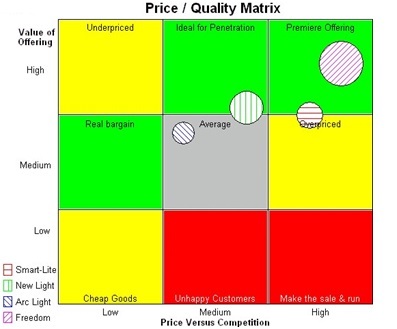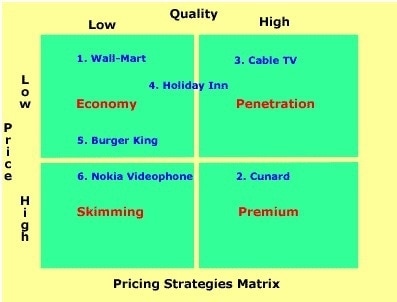The balance between price and quality and the psychological decision making behind it has always been a challenge for marketers. This is because one of the factors in the marketing mix which always troubles marketers is pricing.
Pricing in itself is so dynamic in nature that it can make or break a brand single handed. Moreover, at any given point of time there are many different elements playing a role in deciding the pricing strategy of a company.
However, as years and years of research have shown, pricing is a strong psychological component which can manipulate customer’s decision making. Keep the pricing high, and the customer will think that the quality must be high too. This expectation of the customer is because he wants to receive value for his money. So when he is paying more money, he is expecting more value. And you are better off giving him a high quality product.
On the other hand, if your product is high quality, and you are keeping the price low, the customer might not see the value in the product. He might think that he is paying so less for the product. Then, is the product up to mark? Will the quality be high when the price is so low? That, my friends, is the problem with a price quality relationship.
In essence, if you want to balance price and quality, then you need to decide what type of customers you are going to target. At the same time, you need to consider the competition as well. Customers decide the value based on the competitors present in the market and what the competition is offering to the customer. The below graph will help you understand better of how customers can be targeted based on price and quality.
Price quality matrix
Source – Planware
As you can see in the price quality matrix, whether to keep your prices high or low can be decided on how the customer perceives the competition. If the competition is offering high value products, at a high price, then you can penetrate the market by having a lower price. This will affect your brand recognition, but you can definitely penetrate the market better. And you can have the turnover that you wanted. In the long run, by creating high priced variants, you can conquer the market completely.
On the other hand, if the competitors are cheap and the value is average, then by providing more value, you can become a premium brand in the mind of the customers. Your turnover and quantities sold will drop, but you will be making more margins because you are now considered a premium quality product and hence you can demand premium pricing as well.
Here are some things you have to keep in mind when you want to balance price and quality.
- The customer always want the most “Value for money products”
- By increasing price, it is not necessary that your value increases. You need to add value (features) to your products to impress customers.
- At higher price, the first purchase is most important and will require higher investments from the company in terms of advertising and communications.
- Penetrating competition market which is operating at a high price, requires that you have optimum operations to keep the cost low
- Penetration strategy is a tough strategy and you need to have a regular eye on the quality of your products which are being manufactured at low costs.
- The balance between price and quality, if not managed properly, can result in a huge loss of brand equity, which is very tough to bounce back from.
Overall, each and every company out there is daily trying to improve their quality at an optimum price. Some have been able to do that & they are getting a higher pull from the market. Others have not been able to balance price and quality which has resulted in the brand being forgotten and a competition brand being adopted in their place.
Below is the final graph between which pricing strategy to use against the quality of the product.
Source – Marketing Teacher
Liked this post? Check out the complete series on Pricing


I would like to get regular journals with regards to marketing, product pricing and market share acquisition of a product.